
Nina Ricci is a name that resonates with elegance, sophistication, and femininity in the world of fashion and fragrance. Since its inception in 1932, the brand has been synonymous with delicate designs, luxurious fabrics, and romantic aesthetics. But Nina Ricci is much more than just a fashion label—it’s a cultural touchstone that has shaped decades of style. From haute couture to iconic perfumes, the brand has cemented itself as a powerhouse of French luxury. In this blog post, we’ll explore the rich history of Nina Ricci, the key elements of the brand’s design philosophy, its most iconic fragrances, and its enduring influence on the world of fashion and fragrance.
Table of Contents
The Origins of Nina Ricci: A Family Legacy
The story of Nina begins with its founder, Maria “Nina” Ricci. Born in Turin, Italy, in 1883, she moved to France with her family when she was just 12 years old. There, she honed her skills in dressmaking, working in various Parisian ateliers before eventually starting her own business. By 1932, with the help of her son Robert Ricci, she launched the Nina Ricci fashion house.
Nina was known for her meticulous craftsmanship, and she believed in creating designs that would flatter the female form. Her dedication to her craft quickly earned her a reputation among Parisian high society, and she became a favorite among women seeking timeless, elegant pieces. Ricci’s designs stood out for their femininity, grace, and wearability, offering a contrast to the more avant-garde styles of the time.
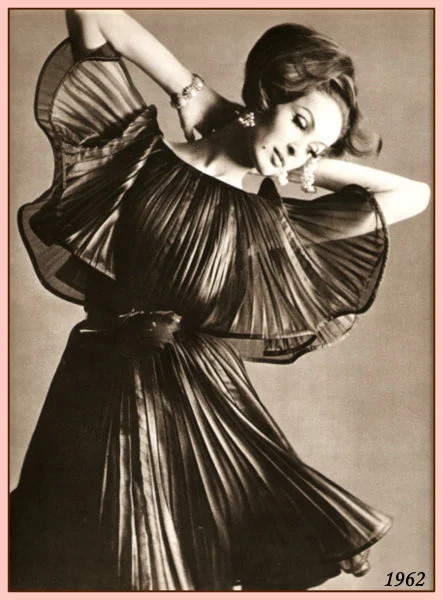
photo/headtotoefashionart
Nina Ricci’s Early Success in Haute Couture
Ricci’s fashion house rose to prominence in the 1930s and 1940s, during a period when the world was undergoing significant social and economic changes. Despite the challenges of World War II, the brand flourished, thanks to Nina’s ability to design practical yet stylish clothing that resonated with women of the time.
Her philosophy was rooted in creating clothes that made women feel beautiful and confident. She preferred soft lines, graceful cuts, and elegant fabrics—staying true to the traditional idea of femininity. While other designers experimented with bold, modern silhouettes, Nina remained steadfast in her romantic aesthetic, which appealed to a broad audience.
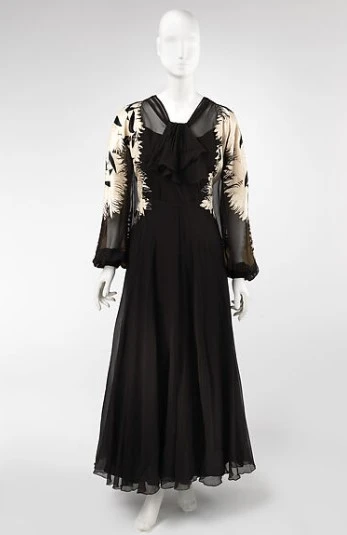
photo/metmuseum
Robert Ricci and the Creation of Nina Ricci Fragrances
While Nina focused on clothing, her son Robert Ricci expanded the brand’s reach by venturing into the world of fragrance. In 1946, he launched the brand’s first perfume, Coeur Joie, but it was the release of L’Air du Temps in 1948 that truly established Nina Ricci as a major player in the perfume industry.
L’Air du Temps remains one of the most iconic fragrances of all time. Its delicate floral blend, featuring notes of rose, jasmine, and carnation, symbolized peace and freedom in the post-war era. The bottle, adorned with two intertwined doves, became an emblem of hope and optimism, capturing the spirit of the time.
The success of L’Air du Temps marked a turning point for the brand. While Nina was already well-known in fashion circles, its foray into the world of fragrance broadened its appeal to a global audience. To this day, L’Air du Temps remains a bestseller and a cornerstone of Ricci’s legacy.
Iconic Perfumes by Nina Ricci
Over the years, She has released a number of fragrances that have captivated perfume lovers worldwide. Let’s take a look at some of the most memorable scents:
1. L’Air du Temps (1948)
As mentioned, L’Air du Temps is arguably the most iconic fragrance from Nina Ricci. It is celebrated not only for its beautiful floral composition but also for its timeless bottle design. The intertwined doves, designed by Lalique, represent love and peace, which were especially meaningful in the aftermath of World War II.
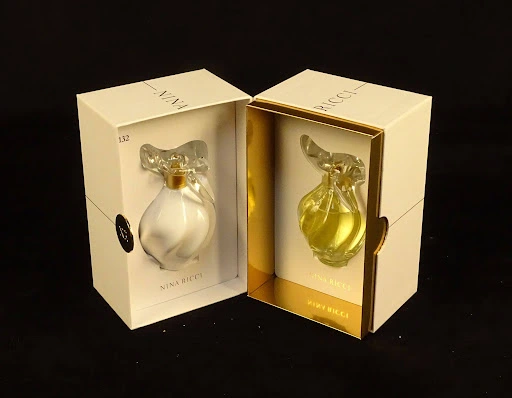
photo/encheresnanteslabaule
2. Nina (2006)
Nina is a playful and youthful fragrance that was released in 2006. With its apple-shaped bottle and fruity-floral scent, this perfume is aimed at a younger audience. The combination of lemon, apple, praline, and vanilla creates a sweet, whimsical scent that has become a favorite among younger perfume enthusiasts.
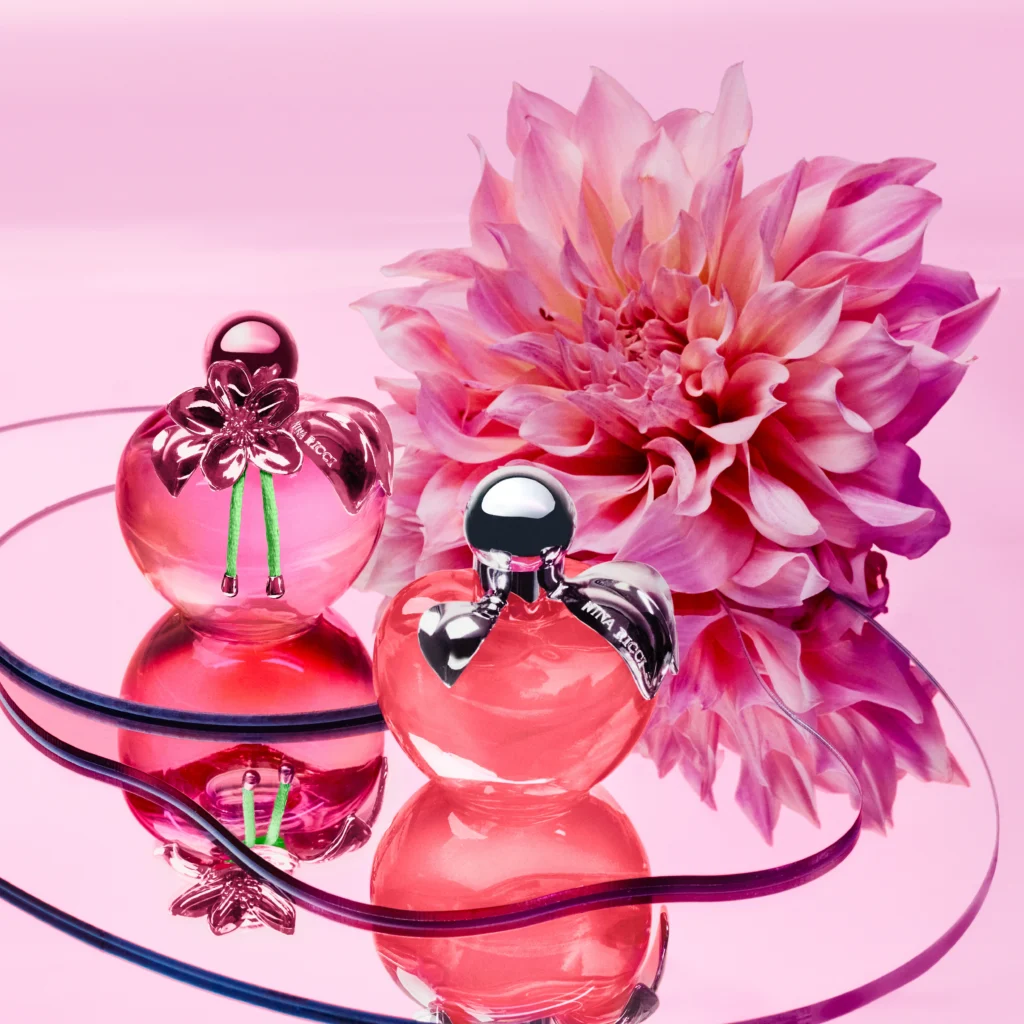
photo/ninaricci
3. Ricci Ricci (2009)
Ricci Ricci is a fragrance for the modern woman—bold, confident, and daring. Its striking bottle, tied with a fuchsia ribbon, reflects the vibrant and feminine scent inside. With top notes of rhubarb and bergamot, and heart notes of rose and tuberose, this perfume strikes the perfect balance between freshness and depth.
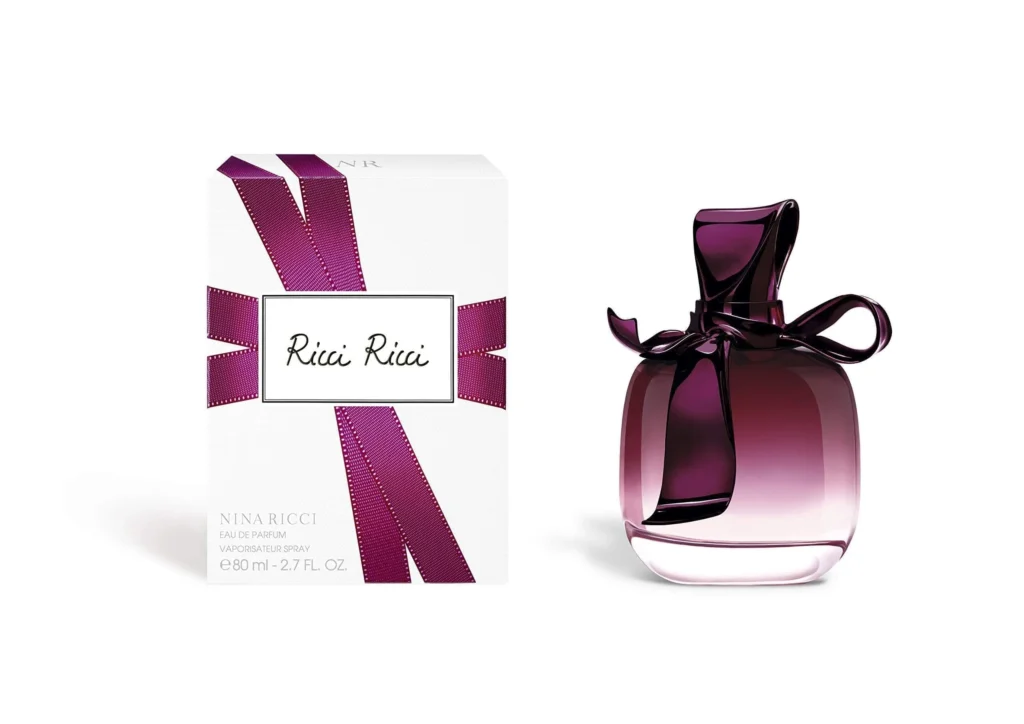
photo/amazoneg
4. Premier Jour (2001)
Premier Jour, which translates to “first day,” is a fragrance that celebrates new beginnings. It’s a soft, delicate scent that combines floral and fruity notes with a musky undertone. The minimalist design of the bottle complements the simplicity and elegance of the fragrance itself.
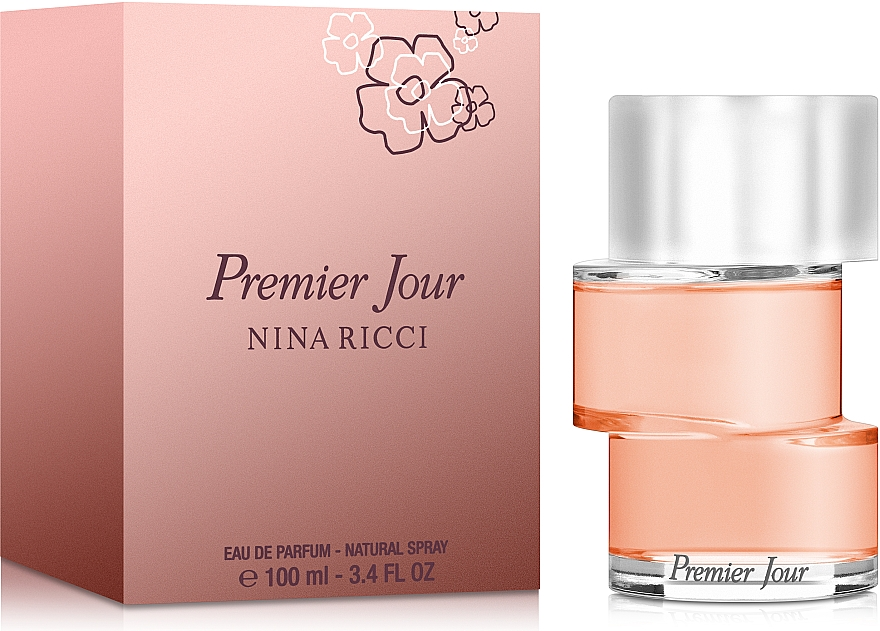
photo/makeupuk
Nina Ricci’s Fashion Evolution: From Couture to Ready-to-Wear
While the brand initially made its mark in haute couture, it eventually expanded into ready-to-wear clothing, allowing a wider audience to experience the beauty and elegance of Nina Ricci designs. Over the decades, the brand has adapted to the changing landscape of fashion, incorporating modern trends while still maintaining its signature romantic aesthetic.
Ricci has collaborated with a number of notable designers over the years, including Olivier Theyskens and Guillaume Henry, who have brought their own unique vision to the brand. Each designer has contributed to the evolution of Ricci, keeping the brand relevant while still honoring its roots in femininity and grace.
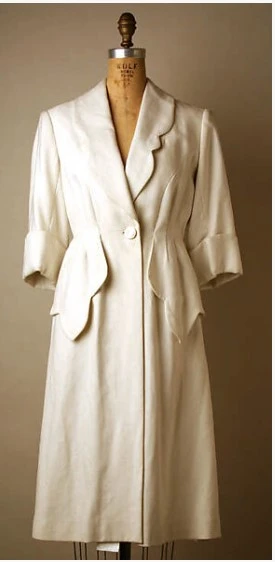
photo/metmuseum
The Timeless Appeal of Nina Ricci Designs
One of the reasons Ricci has remained relevant for so long is its timeless appeal. While fashion trends come and go, Ricci’s designs have always remained classic, elegant, and feminine. Whether it’s a flowing gown, a tailored suit, or a delicate blouse, the brand’s clothing exudes sophistication and grace.
At the heart of Ricci’s design philosophy is the belief that fashion should enhance a woman’s natural beauty, rather than overpower it. This focus on timeless elegance has helped the brand transcend the whims of fashion, making it a favorite among women who appreciate classic, understated luxury.
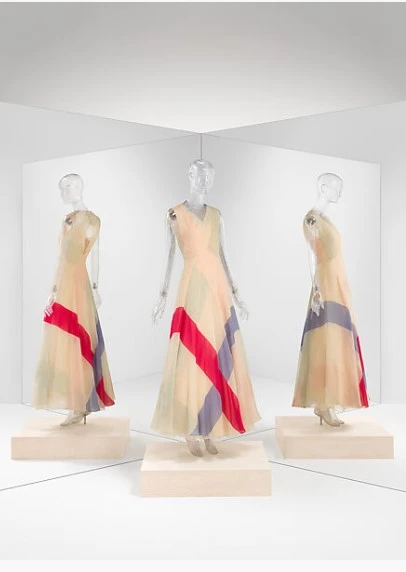
photo/metmuseum
Also Read-Paul Poiret: The Revolutionary Designer Who Shaped Modern Fashion
Iconic Collaborations
Ricci’s influence in the fashion world has been magnified by several high-profile collaborations with famous designers. Throughout its history, the brand has worked with some of the most talented fashion minds, each bringing a new layer of creativity to the house.
These collaborations have helped keep Ricci at the forefront of fashion innovation while still adhering to its core principles. Designers like Olivier Theyskens and Guillaume Henry brought their own unique touch to the brand, reinvigorating its image for a new generation of women while staying true to the elegance that has always defined Nina Ricci.


Guillaume Henry(left)/photo/dailyfrontrow Olivier Theyskens(right)/photo/imdb
Nina Ricci in the 21st Century
As fashion trends continue to evolve, Ricci has successfully adapted without losing its iconic identity. The 21st century brought with it new challenges, but the brand’s commitment to excellence in design and craftsmanship has remained steadfast. New creative directors have been tasked with balancing tradition and modernity, creating pieces that resonate with today’s fashion-forward consumers.
Recent collections have included a mix of classic and avant-garde designs, reflecting the diverse tastes of modern women. The use of bold colors, innovative textures, and new silhouettes has allowed Ricci to remain relevant in a competitive fashion industry while still honoring its heritage.
Famous Celebrities Who Wore Nina Ricci
Over the decades, Ricci has dressed countless celebrities and fashion icons, helping the brand maintain its status as a go-to for red-carpet events and high-profile occasions. From the golden age of Hollywood to today’s biggest stars, Ricci has been a favorite among A-listers looking for elegance and sophistication.
Celebrities like Audrey Hepburn, Grace Kelly, and more recently, Lupita Nyong’o and Cate Blanchett, have all donned Ricci designs on major red carpets. These glamorous endorsements have helped solidify Nina Ricci’s place as a symbol of timeless beauty in the world of fashion.

photo/imdb
The Transition of Creative Directors
Over the years, several creative directors have taken the helm at Nina Ricci, each bringing their own interpretation of the brand while honoring its foundational elegance. Key figures include Olivier Theyskens, whose tenure brought a gothic-romantic flair to the designs, and Peter Copping, who emphasized lightness and femininity.
Guillaume Henry, another creative mind, introduced a more modern and youthful energy to the collections. With each transition, the brand has been able to stay fresh and dynamic, adapting to the ever-changing landscape of fashion while maintaining the legacy Ricci built.
Nina Ricci Today
Today, she continues to thrive as a luxury brand, offering everything from high fashion to iconic fragrances. The brand’s clothing lines still appeal to those who appreciate timeless elegance, while its perfumes remain as popular as ever. Whether it’s through haute couture, ready-to-wear, or fragrances, Ricci’s influence continues to be felt in both the fashion and beauty industries.
The house’s commitment to excellence is unwavering, and it continues to produce collections that honor its heritage while appealing to the modern woman.
Sustainability and Innovation
Like many luxury brands, Ricci is making strides toward sustainability. The fashion industry is increasingly focused on reducing its environmental footprint, and Ricci is no exception. The brand has begun adopting more sustainable materials, ethical production methods, and eco-conscious practices in its collections.
From using organic fabrics to reducing waste in the production process, Nina is working to ensure that its legacy endures without compromising the future. This shift reflects the broader changes within the fashion industry and highlights the brand’s commitment to evolving with the times.
Ricci’s Global Influence
Though rooted in Parisian tradition, Ricci’s influence spans the globe. The brand has a significant presence in major fashion markets around the world, from Europe to Asia and the Americas. Its boutiques can be found in major cities like Paris, New York, Tokyo, and Milan, offering exclusive collections and luxury perfumes to a discerning international clientele.
Ricci’s global success is a testament to its ability to resonate with women from diverse cultures, thanks to its timeless designs and universally appealing fragrances.

Nina Ricci Store in Dubai/photo/moodiedavittreport
Nina Ricci in the Modern Era
In recent years, Nina Ricci has continued to evolve, balancing its heritage with modern sensibilities. The brand’s ready-to-wear collections feature a blend of romantic silhouettes and contemporary touches, appealing to a new generation of fashion lovers.
Nina Ricci’s ability to remain relevant in the ever-changing world of fashion is a testament to its commitment to quality, craftsmanship, and femininity. Whether it’s through its clothing, accessories, or fragrances, the brand continues to evoke a sense of romance and elegance that resonates with women around the world.
Conclusion: The Enduring Legacy of Nina Ricci
Nina Ricci is more than just a fashion house—it’s a symbol of timeless elegance, femininity, and sophistication. From its humble beginnings in Paris to its status as a global luxury brand, Nina Ricci has left an indelible mark on the worlds of fashion and fragrance. Its commitment to creating designs that celebrate the beauty and grace of women has made it a beloved brand for generations, and its iconic perfumes continue to captivate the senses of people around the world.
As the brand moves forward, it remains true to the values that have defined it for decades: elegance, craftsmanship, and a deep appreciation for the art of design. In an industry that is constantly changing, Nina Ricci’s legacy of beauty and grace will undoubtedly continue to inspire for many years to come.
FAQs
1. What makes Nina Ricci’s designs unique? Nina Ricci’s designs are known for their romantic, feminine aesthetic, with a focus on soft fabrics, elegant silhouettes, and intricate detailing. The brand consistently merges timeless elegance with modern sensibilities, making its pieces feel both classic and fresh.
2. What is the significance of “L’Air du Temps” in Nina Ricci’s history? “L’Air du Temps,” launched in 1948, is one of Nina Ricci’s most iconic creations. This fragrance became a symbol of post-war peace and love, thanks to its floral scent and the doves symbolizing harmony. It remains a timeless fragrance loved by generations.
3. How did Robert Ricci contribute to the success of the brand? Robert Ricci, Nina Ricci’s son, played a pivotal role in the brand’s expansion, especially through the launch of its fragrance division. His vision helped bring global recognition to Nina Ricci, and he was instrumental in creating the famous “L’Air du Temps” perfume.
4. What is Nina Ricci’s approach to sustainability? Like many luxury brands, Nina Ricci is working towards sustainability by incorporating eco-friendly practices and materials in its collections. This includes the use of organic fabrics, ethical production methods, and efforts to reduce waste.
5. Who are some of the famous designers and celebrities associated with Nina Ricci? Nina Ricci has collaborated with notable designers like Olivier Theyskens and Guillaume Henry, each of whom brought their unique style to the brand. Celebrities like Audrey Hepburn, Grace Kelly, and more recently, Lupita Nyong’o, have worn Nina Ricci designs on the red carpet.
6. Who founded Nina Ricci? Nina Ricci was founded by Maria “Nina” Ricci in 1932, with the help of her son, Robert Ricci.
7. What is the most famous Nina Ricci perfume? The most famous Nina Ricci perfume is L’Air du Temps, released in 1948. It remains one of the most iconic fragrances in the world.
8. What is Nina Ricci known for? Nina Ricci is known for its elegant, feminine designs in both fashion and fragrance. The brand has a long-standing reputation for creating timeless, romantic pieces.
9. Has Nina Ricci evolved with modern trends? Yes, while maintaining its classic elegance, Nina Ricci has evolved to incorporate modern trends, particularly in its ready-to-wear collections.
10. What is the significance of the doves in L’Air du Temps? The intertwined doves on the L’Air du Temps bottle symbolize peace, love, and freedom, reflecting the post-war optimism of the time.
One thought on “Nina Ricci: A Legacy of Timeless Elegance and Feminine Allure”